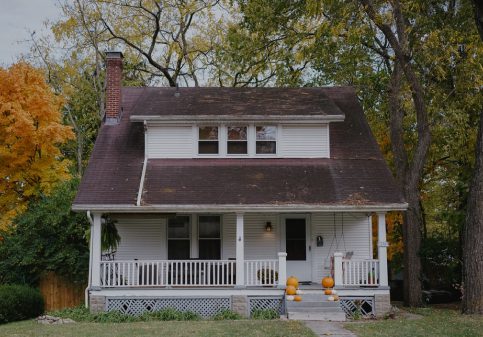Construction Loan
Talk to our mortgage broker now
5 YEARS
SPECIAL
Let’s Get Started
What Is a Construction Loan?
Construction loans allow you to obtain the necessary financing to build a custom home. What makes them different is that you do not receive the full funding of the loan upfront, and you do not receive the total mortgage initially. Instead, there are several payments made at various construction milestones. This allows the home builder to work while receiving the funds needed for the project, but it also helps to safeguard the mortgage lender since there is no asset to tie the loan to at the start of the project. You can borrow money to have a home constructed for you. Unlike buying an existing home, a few different steps are involved in the process. You can learn how to get a construction mortgage from LowRateMortgag by following the insights on this page. Call us at any time to get started on your loan application. Construction mortgages vs conventional mortgage loans What makes them different? There are a lot of differences in these loans that you need to know about to ensure you obtain the loan fitting for your needs. In-home construction loans, you do not receive the full amount for purchasing the property immediately. Instead, you receive it over time, as the property is built. These loans are typically short term loans as well, and they are not meant to finance in the same way as a conventional mortgage.
There are some things you should know about these loans and how they work:
• Maximum amortization period For construction financing, this is typically 1 year, whereas a conventional mortgage may be up to 25 years.
• Interest rates are higher for construction lending and the lowest for conventional loan.
• Loan to value: With the construction process, this is very limited at 75%, but it can be as high as 95% for a traditional mortgage.
• Draw schedule: Most often, the construction process will involve four draws, or payments, made to the home builder and you. A conventional loan has just a one-time lump sum payment.
In both cases, you need to meet the criteria set by the lender to obtain a loan. That means that things like interest rates and credit scores are a consideration. Most lenders require good or better credit scores to get these loans. This also determines the mortgage amount or the amount of money you borrow to purchase your home.

Construction Loan
Deciding to buy a home does not always mean finding an existing home to purchase. You may be considering building a home, and a construction mortgage is an ideal way to do that for many situations. This type of construction loan is done in phases to allow you to secure funding that is both affordable and fitting to your needs. At Lowratemortgage.ca, we can help you with the entire construction mortgage process, enabling you to get into the perfect property for your needs and have the funds to make that possible. As a mortgage broker, we can help you find most loans available for construction funding. You can submit a mortgage application with us and start the process. Our goal is to help you find a home loan that meets all of your goals, including offering competitive mortgage rates, a total mortgage value that allows you to build your dream home, and much more. So how does a construction mortgage work? What will a construction mortgage mean for you as you begin to work with a home builder? Let’s take a closer look at all of those important topics.
When Can You Use Construction Mortgages?
You may have more flexibility in using these loans than you realize. These loans may be available to first time home buyers, those selling an existing house, and others. As your mortgage broker, we can help you navigate this process to ensure you can purchase a loan that fits your specific needs and financial objectives. You may wish to turn to these mortgages in situations such as the following:
New home construction
Those building a new home must have the funds to allow it. Most often, the home builder (and even if you self build) will require that you make payments over time during the construction process. In this situation, the loan may include the vacant land being purchased to build as well as the financing of the construction. Also note that if you are building a home but already have a plot of land to build on, you can use construction mortgages. These are versatile in terms of where they can be used.
Home renovations
Using these loans to help with existing home renovations may be possible. Most often, this will require a substantial amount of repair or upgrading to the home. In some situations, these may be a part of refinancing the existing loan. The new loan will cover the costs remaining on your existing mortgage and the construction costs. Our team can help you navigate the options with these loans for any home construction. You can work with our construction financing team to learn more about your loan opportunities and choose what is most affordable for your needs.
Non-eligible projects for construction mortgages
There are some limitations on when lenders will offer these loans. It is not likely apply to situations where you buy an existing home. In some situations, home buyers will obtain financing for their newly constructed home through the home builder or developer. You do not need to obtain construction loans if you go that route. You would follow the same overall process as buying a home through a traditional mortgage. If you are unsure what type of loan is best for you or are worried about the financing now that you have a signed construction contract and other documents, let us help you. Reach out to our mortgage brokers for insight on every process step. We are here to help you.


What to Expect During a Construction Loan
Often called draw mortgages, these loans are a bit different overall than what you may expect in a traditional mortgage loan. A construction draw occurs when the lender provides financing to you. That financing helps to pay for a specific part of the process. It allows for the payment of the general contractor or supply purchases during the construction process. The disbursement of these funds is often paid through an attorney. Some lenders deal directly with the general contractor on the project. However, lenders do not just hand over the funds. The contractor must work through the process and provide updates to the lender. The initial phase typically requires a full construction plan and an outline of the budget for the project. The lender may need to agree to the project and approve the process before any funding is released. The lender wants to ensure the home is being built to ensure it is safe and valuable enough to cover the cost of the loan itself. During the construction period, the lender will stay up to date on the project’s progress. The lender typically will need to approve the project before construction begins and then will set timeframes for when additional funding may be made available. They will require building permits and inspections to happen throughout the process to protect their overall investment in it. Your lender does not care what the house will look like or what features you add to it unless it impacts the value. Instead, the lender wants to ensure that the project stays on time and that the proper oversight is in place at every set construction milestone to ensure your home is being built properly. You will learn more about the home’s construction process from your contractor. Remember that the lender will not continue to disburse funds if there is no progress on loan after the first draw.
That is why it is critical to have a contractor you can trust working on your home project with you.
Answering Your Common Questions About Building Your Dream House
You cannot wait until your finished home is ready to move into, and you can create a place that is perfect for your needs. Here are some common questions borrowers often have about the construction loan process and what to expect.

How to Get Started Obtaining the Construction Loan Right for You
Getting a construction loan from Lowratemortgage.ca does not have to be a challenge, and our team can work closely with you throughout the process. The first step is to have construction costs estimated. This will depend on many factors including the cost of building materials, overall building costs, and much of your money you plan to purchase into the construction process. Once you have that, provide financial statements to your lender. They will go to work to determine what your needs are. They will consider your income, living expenses, credit cards, other debts, and other financial obligations to determine your payment options. This is often when you learn how much the lender will approve you to borrow after completing your mortgage application. You are almost at the point of having your own home, but there are a lot of additional steps. Your lender has to work closely with your construction team to fully understand the financial obligations, timelines, and project details. This information allows your lender to approve the loan and start the funding process. Remember, the full amount is not provided upfront. The initial disbursement may help with the purchase of the land, purchasing building materials, and getting the project started. Over time, funds will be released, allowing for builders to continue to work and have the money needed to pay contractors and suppliers. Construction loans require lenders to stay on top of the building process, ensuring the home is built properly. Once the entire project is complete, the construction costs are paid in full, and the loan converts to your permanent loan.
Expect Outstanding Service
We are committed to ensuring your new home construction goes well. Contact us now to learn more about the steps we can take to provide you with an estimate of what you can expect. Let’s dream build and building your perfect home
Are You Ready to Get Started?

